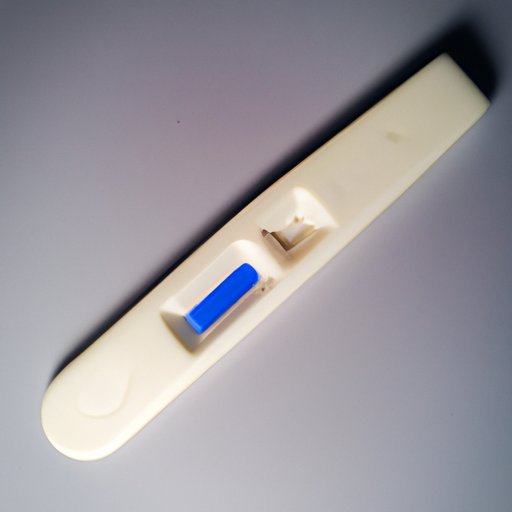
Introduction
For most women, the question “am I pregnant?” can be a nerve-wracking experience, especially if you’re trying to conceive. Knowing how soon you can get a positive pregnancy test can help ease the anxiety and give you a clearer picture of your journey to motherhood.
The Science behind Pregnancy Tests: Understanding Early Detection and Accuracy
There are two types of pregnancy tests: blood tests and urine tests. Urine tests are more commonly used because they’re readily available and easy to use at home. All pregnancy tests work by detecting the presence of human chorionic gonadotropin (hCG), a hormone produced by the placenta after a fertilized egg implants in the uterus.
The Waiting Game: When to Take a Pregnancy Test and Possible Factors Affecting Its Results
The most common time to take a pregnancy test is after a missed period, but you can also take a test as early as 6-12 days after ovulation. Tracking your ovulation cycle can help you determine when to take a test, as well as your fertility window. Other factors that can affect the accuracy of a pregnancy test include medications (such as fertility drugs or hCG injections), medical conditions (such as ovarian cysts or ectopic pregnancies), and expired tests.
Early Signs of Pregnancy: How Soon Can You Get a Positive Pregnancy Test and What to Look for
Early signs of pregnancy can vary from woman to woman and may include fatigue, breast tenderness, and morning sickness. Some women may also experience implantation bleeding, which occurs when the fertilized egg implants in the uterine wall and can be mistaken for a lighter period. If you’re experiencing any of these symptoms and you’ve missed your period, it’s a good idea to take a pregnancy test.
At-Home Pregnancy Tests: A Comprehensive Guide to Choosing and Using the Right Test for You
Choosing the right pregnancy test can be overwhelming, given the numerous types and brands available on the market. Factors to consider when choosing a test include cost, sensitivity (with lower-levels being more sensitive), and ease of use. Follow the instructions on the package carefully, and collect urine samples in the morning, as they tend to have higher levels of hCG than samples collected later in the day.
Misconceptions about Early Pregnancy Tests and Their Accuracy: Dispelling Common Myths
There are many misconceptions about pregnancy tests, including the idea that a faint line automatically means a positive result. In reality, any sign of a second line, no matter how light, indicates a positive result. Another misconception is the idea of evaporation lines, which occur when the urine dries on the test strip. Read the instructions carefully to avoid mistaking evaporation lines for positive results.
Decoding False-Positive and False-Negative Pregnancy Tests: Causes and Solutions
False-positive results can occur if you’ve recently been pregnant and are still producing hCG or if you’re taking certain medications. False-negative results can occur if you test too early or if you have a medical condition that interferes with the test’s accuracy. If you receive an inaccurate result, wait a few days and test again or consult your doctor for additional testing.
Conclusion
In conclusion, knowing how soon you can get a positive pregnancy test can help alleviate the anxiety surrounding pregnancy detection and help you plan accordingly for your journey to motherhood. With the many options available for at-home tests, tracking your ovulation cycle, and consulting your doctor, the process can be a much smoother and more manageable experience.




